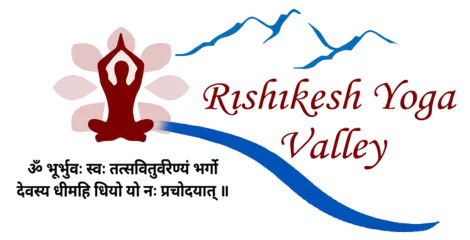Surya Namaskar (Sun Salutation): A Comprehensive Guide with Steps to do and and Benefits.
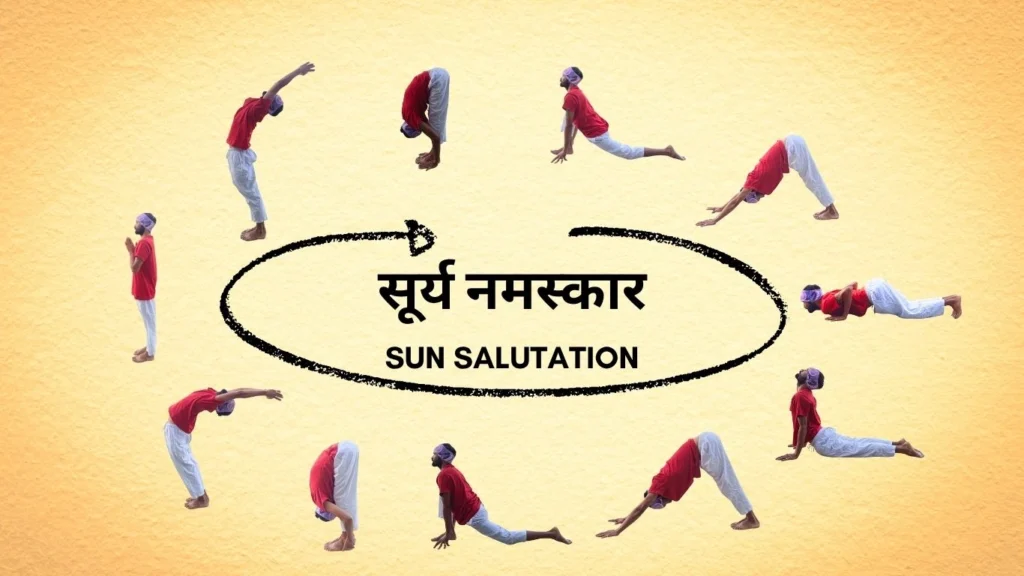
Surya Namaskar, or Sun Salutation, is a traditional yoga sequence of 12 linked asanas (postures) performed in a flowing, continuous cycle. Literally meaning “bowing to the sun,” this practice honors the sun as a life-giving force .
Each set of 12 poses involves coordinated breath – inhaling during upward (backward) bends and exhaling during forward bends – which enhances oxygen flow and calms the mind.
In fact, research shows that the alternating inhale-exhale pattern and dynamic movement of Surya Namaskar can improve lung capacity and breath control .
Surya Namaskar works almost every major muscle group. With each round you stretch and tone your legs, hips, spine, chest, arms and core. Because it combines stretching with strength holds, it increases flexibility and muscle tone .
Surya Namaskar is often described as a “complete workout” that requires no equipment . In addition to physical benefits, it brings mental and emotional balance: many practitioners report greater focus, stress relief and an uplifted mood after even a few rounds .
For best results, do Sun Salutations early in the morning on an empty stomach . This is traditionally recommended so you feel light and energized (and studies agree that you should avoid a full stomach during yoga).
Always move with your breath: inhale as you arch up or lift your body (e.g. raising arms or doing Cobra) and exhale as you fold or bend down . Keeping an even, relaxed breathing pattern helps make the sequence meditative.
Begin at a comfortable pace, focusing on form. As you become more fit and flexible, you can gradually add more rounds or speed up. (Advanced practitioners often do dozens of rounds – for example, 108 Sun Salutations is a traditional challenge for seasoned yogis – but beginners should start with just a few.)
12 Steps of Surya Namaskar
A single round of Sun Salutation involves 12 poses, usually performed twice (once leading with the right leg and once with the left) to complete one full cycle. Here is a step-by-step breakdown.
1. Pranamasana (Prayer Pose)

Stand tall at the front of your mat or floor with feet together, spine straight. Bring your palms together in front of the chest in prayer.
2. Hastauttanasana (Upward Salute or Raised Arms Pose)
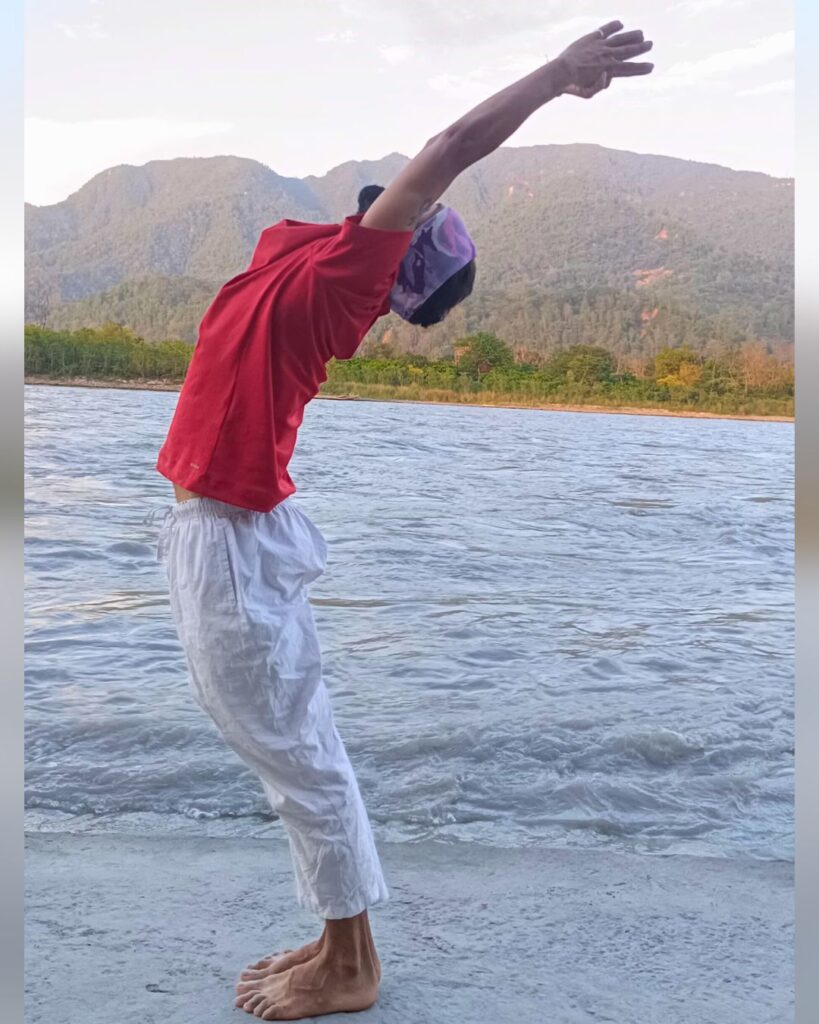
Inhale and sweep your arms up overhead, palms facing each other. Gently arch your back and look up, lengthening from heels through fingertips.
3. Hasta Padasana (Standing Forward Bend)
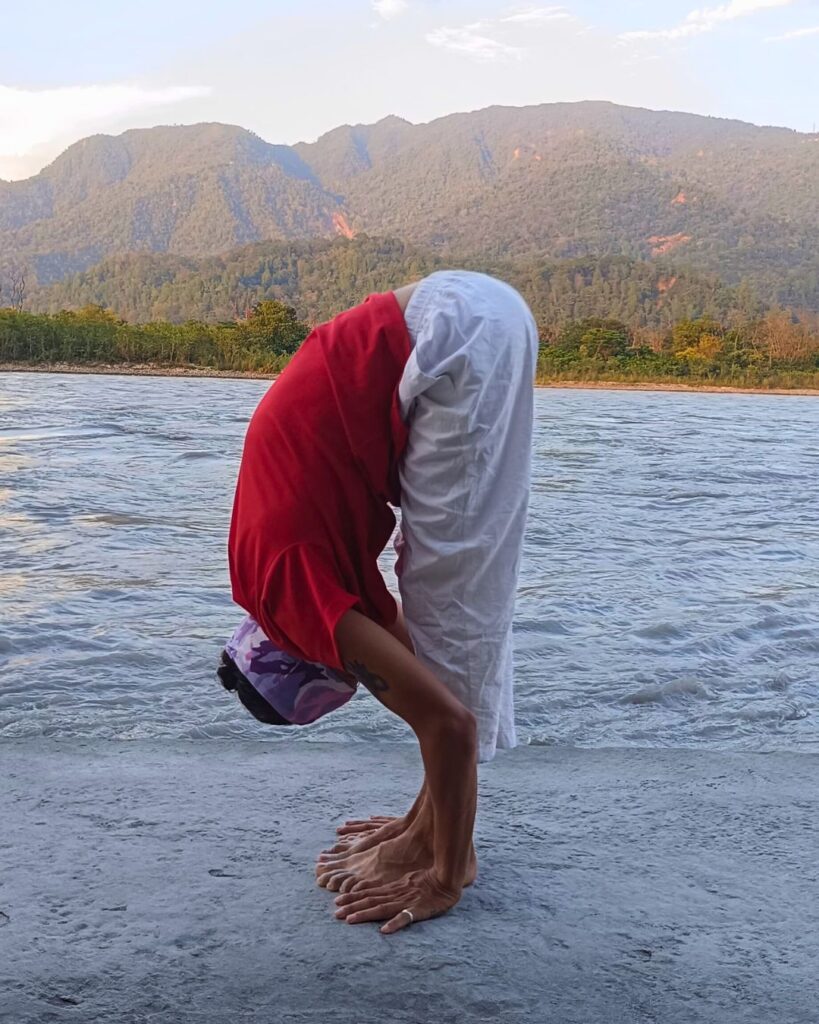
Exhale and hinge at the hips to fold forward. Keep your knees bent if needed, and try to touch the floor or shins with your hands. (If your hamstrings are tight, allow a slight bend in the knees.)
4. Ashwa Sanchalanasana (Low Lunge / Equestrian Pose)
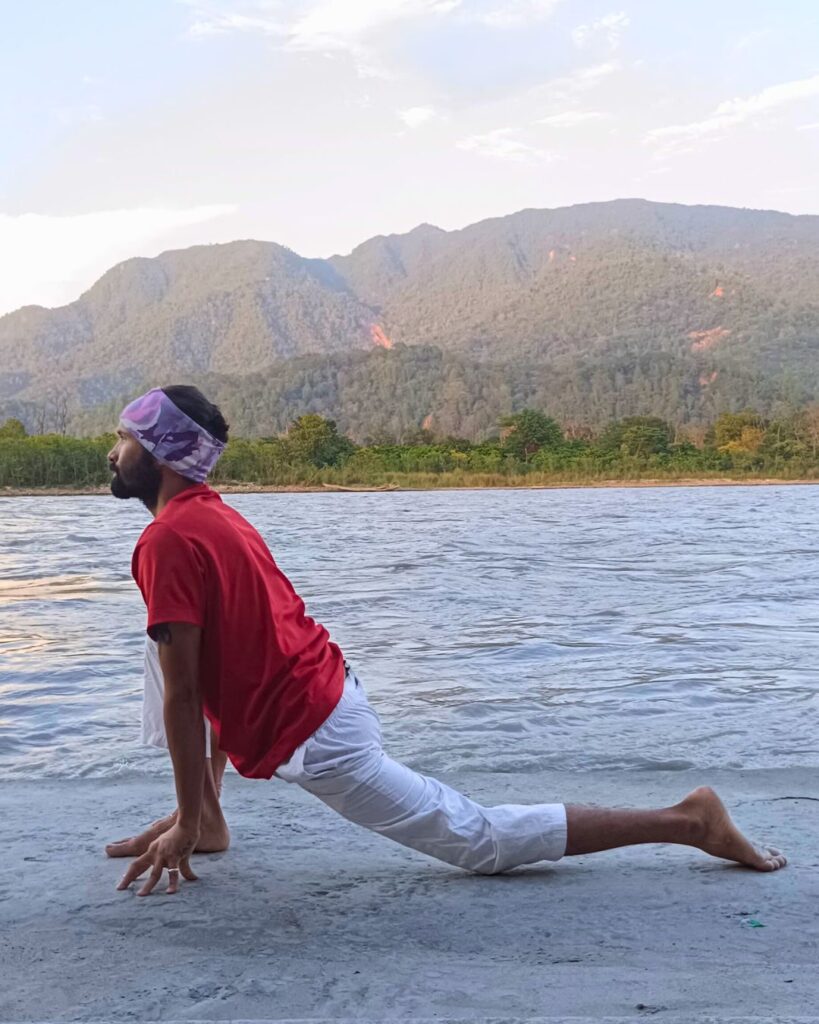
Inhale, step your left foot back far behind you, and ground the left knee to the floor. Keep the right knee bent over the ankle, hands on either side of the front foot, and look straight gently.
5. Parvatasana (Mountain Pose)
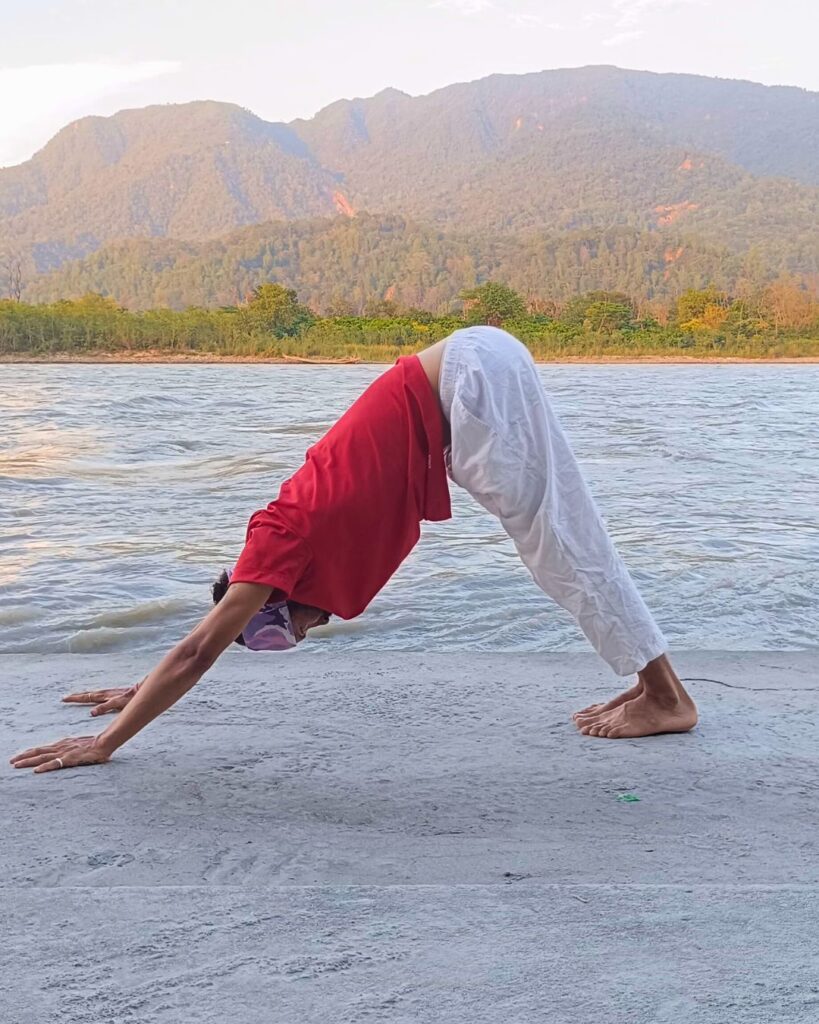
Exhale and step your right foot back to bring it next to the left. Simultaneously, lift your hips high toward the sky, forming an inverted “V” shape with your body. Arms and legs should be straight, with your head between your arms and heels aiming toward the floor.
6. Ashtanga Namaskara (Eight-Limbed Salute)
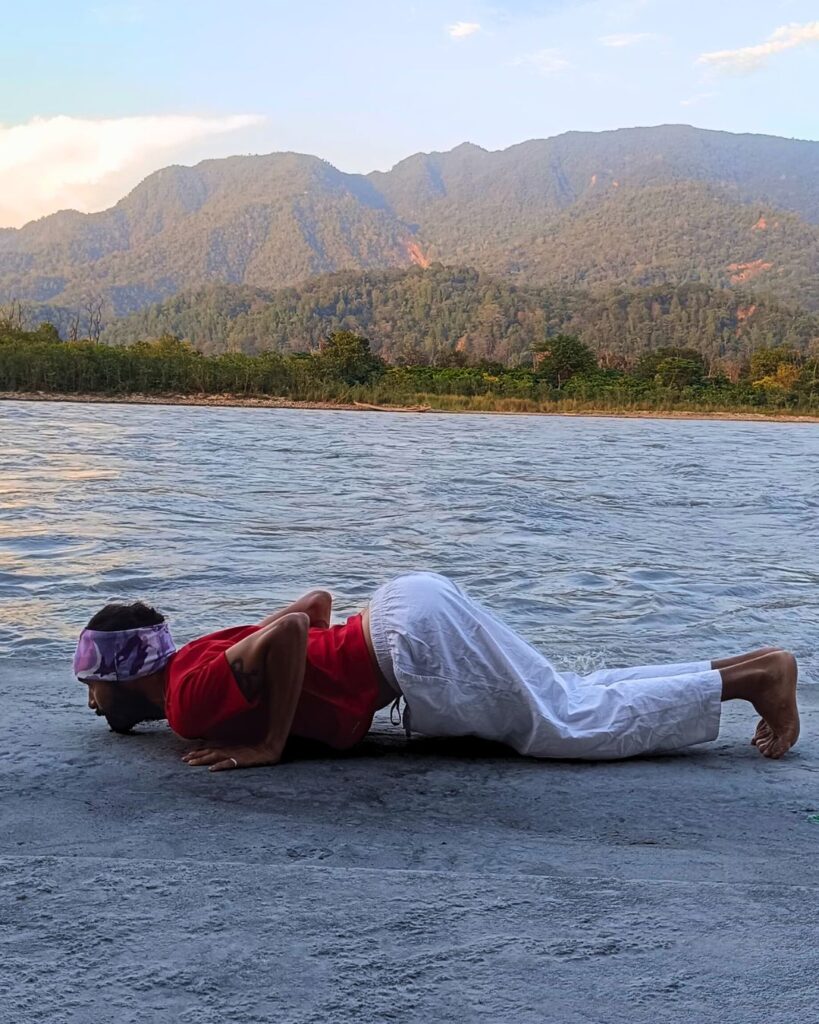
Exhale and lower your knees, then chest and chin, all to the floor/mat. Press the hips slightly up; the eight contact points are hands, feet, knees, chest and chin.
7. Bhujangasana (Cobra Pose)
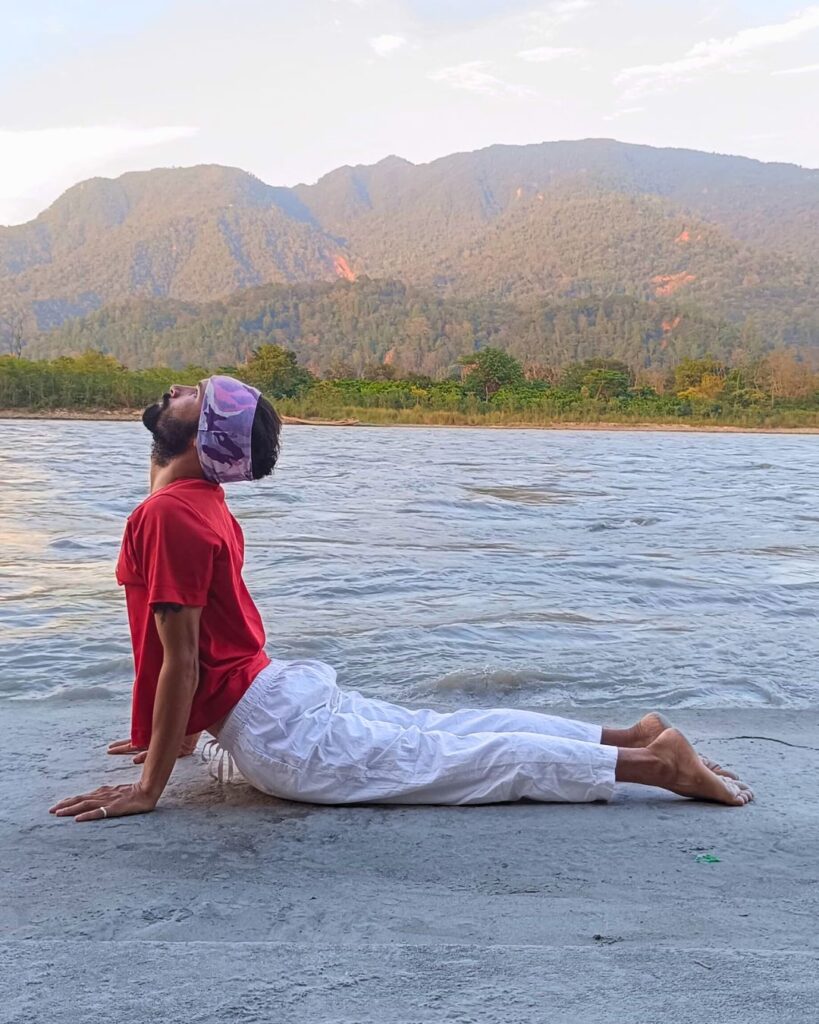
Inhale and slide forward so legs are extended on the mat. Press into your hands and lift your chest into Cobra. Keep elbows slightly bent and shoulders down away from ears.
8. Parvatasana (Mountain Pose)
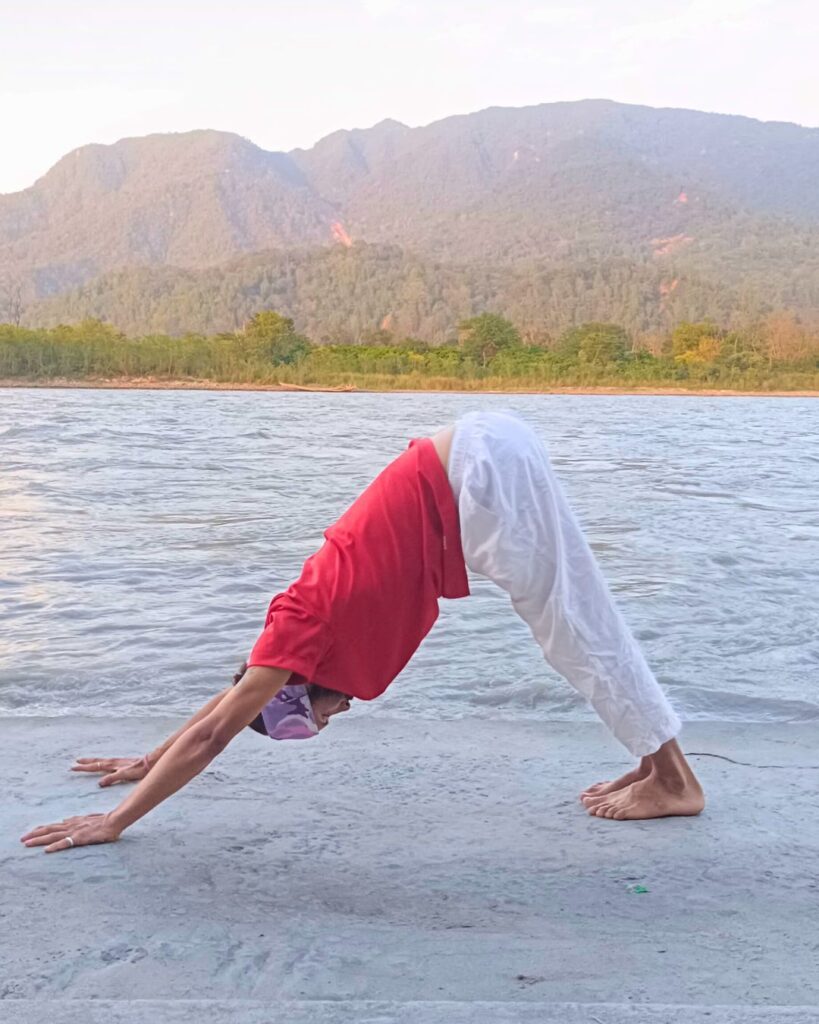
Exhale, tuck toes, and lift your hips up and back into an inverted “V” shape. Press your heels toward the floor and relax your head between the arms.
9. Ashwa Sanchalanasana (Low Lunge / Equestrian Pose)
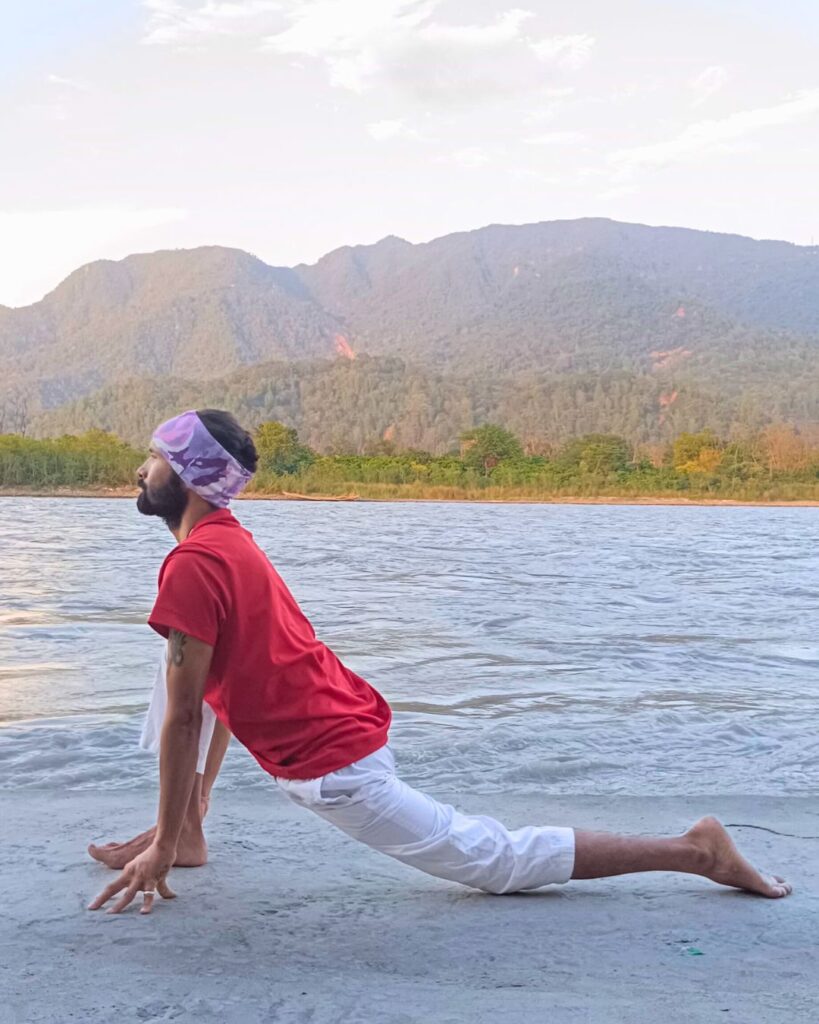
Inhale, step the right foot forward between your hands, lowering the left knee to the floor/mat. Press the hips down and look up.
10. Hasta Padasana (Standing Forward Bend)
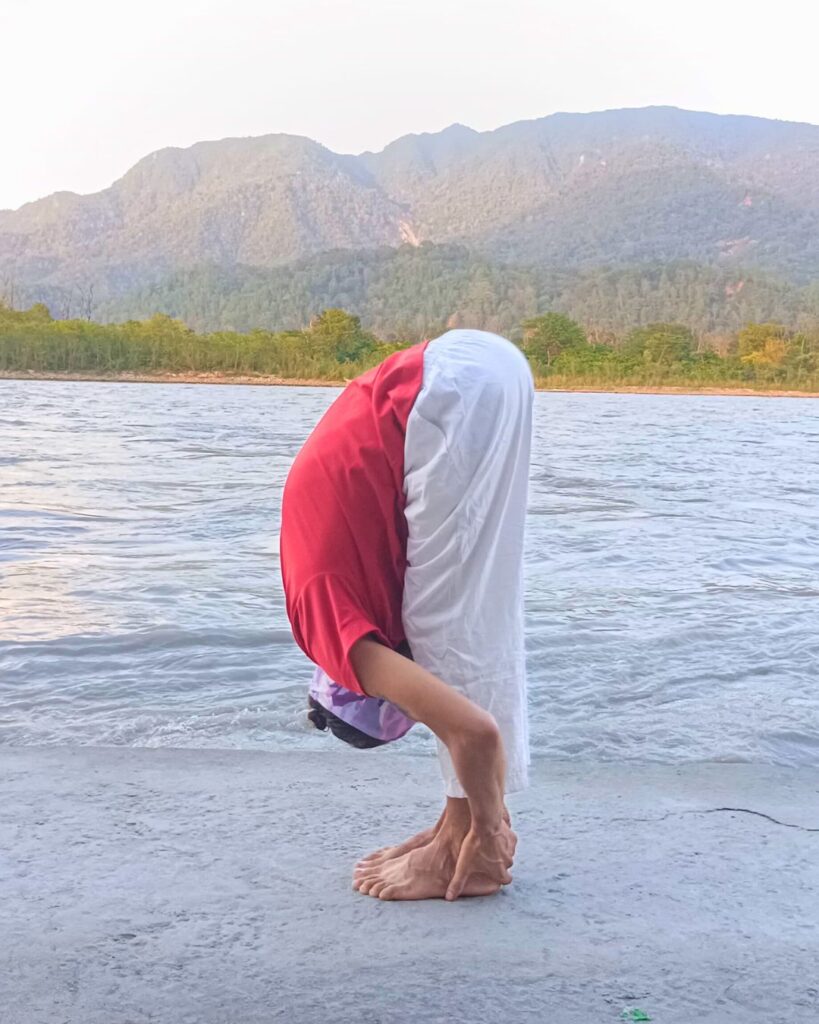
Exhale, step your left foot up to meet your right at the front of the mat, folding forward again. Hands go to the ground (or shins) as in step 3
11. Hastauttanasana (Upward Salute)
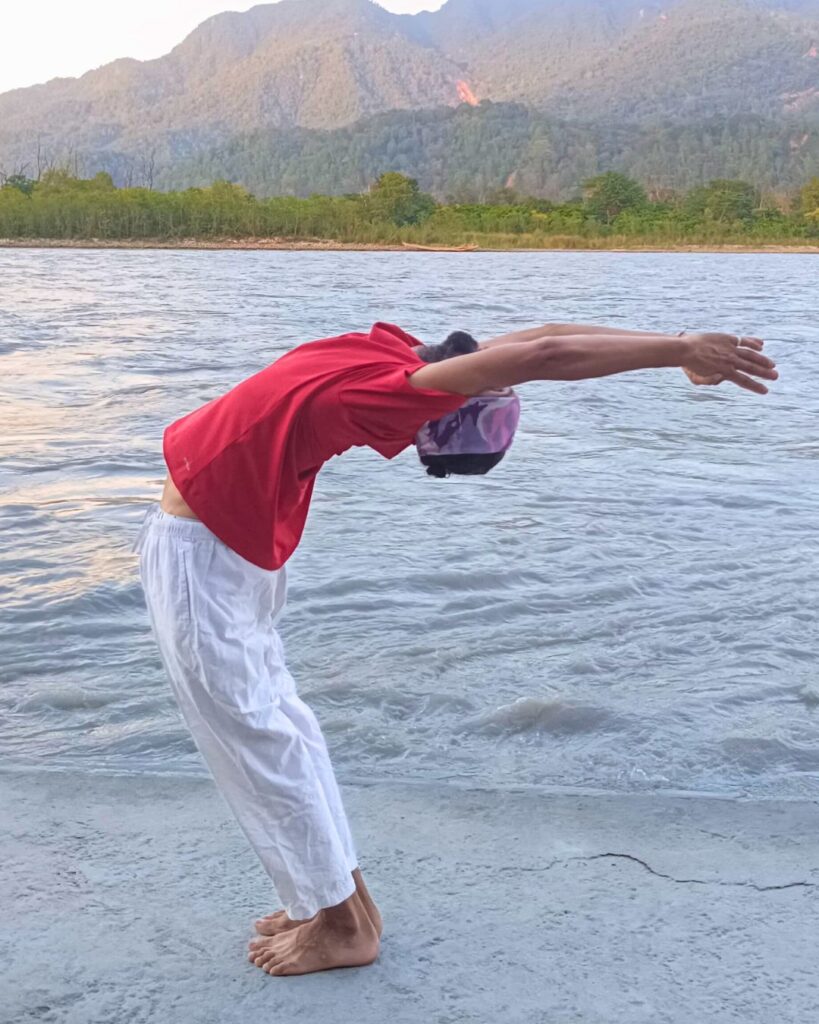
Inhale, sweep the arms up overhead and come into a backbend, as in step 2. Look gently up or forward. (keep the back-bending as per your comfort, dont over do)
12. Namaskarasana / Prayer Pose
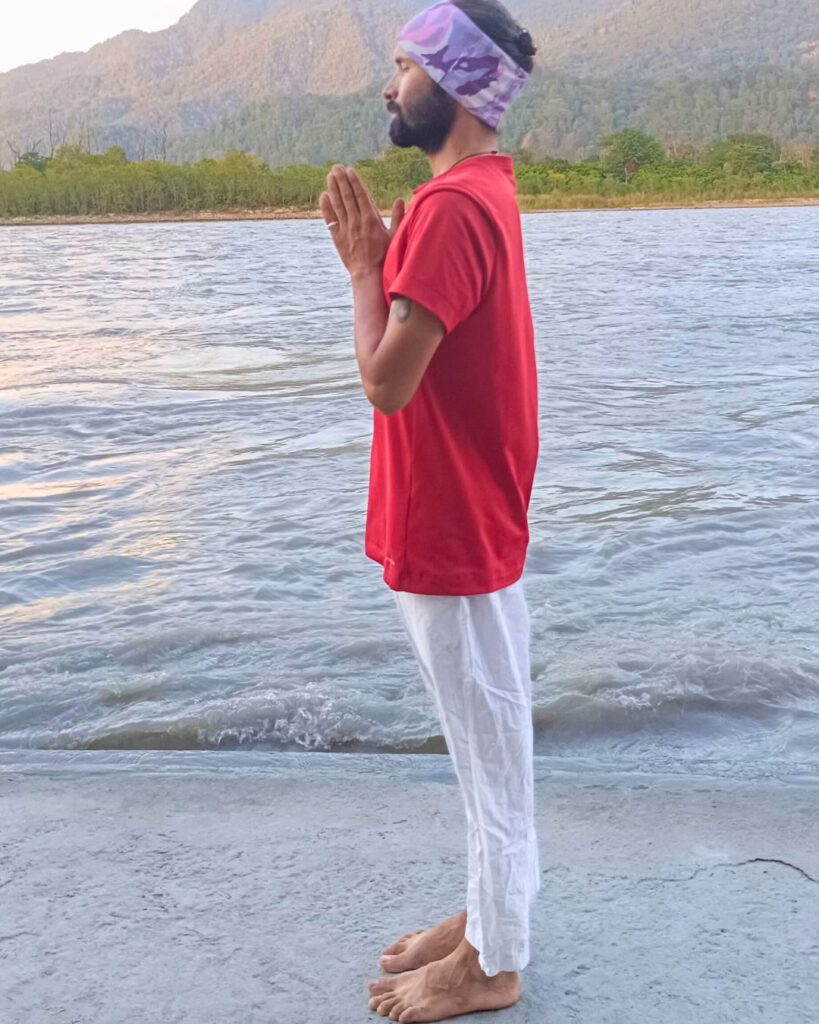
Exhale and lower your arms to your sides or back to prayer at the chest. Stand tall and relax, observing the sensations in your body.
Check out yoga teacher training courses:
Completing step 12 returns you to the starting position. That is one round (cycle). To finish the round, repeat steps 1–12 starting with the opposite leg in step 4 and 9 (i.e. left foot forward between your hands and lowering the right knee to the floor/mat).
This balances both sides of the body. When you repeat the sequence, coordinate your breath exactly as before – inhale on the “up” moves and exhale on the “down” moves . With practice, the flow becomes smooth and meditative.
Practice Tips and Precautions
Breathing is key. Always synchronize movement with breath: inhale through the nose on upward/expansive movements (like extending arms or arching back) and exhale on forward bends and contractions . This not only fuels your muscles but also creates a calming rhythm.
Do it on an empty stomach, ideally in morning. For full benefit, perform Surya Namaskar in the morning or as a warm-up, with an empty stomach . (One yoga guide notes that practicing first thing on an empty stomach yields the full benefits, whereas doing it after a meal can leave you feeling sluggish .)
Start slow and gentle. If you’re new or lack flexibility, modify as needed. Bend your knees in forward folds, keep elbows bent or knees on floor in Cobra, and don’t push into pain. Use yoga blocks or a chair if you can’t reach the floor. With time you’ll gain strength and can move deeper.
Progress gradually. Begin with just 3–5 rounds (one side + the other = one round). Even a few rounds warm up the body. As strength and endurance improve, you can do more. Some people work up to doing 12, 54, or even 108 rounds on special occasions – but that is an advanced practice.
Listen to your body. Surya Namaskar is intensive. Avoid it if you have acute injuries (especially wrist, shoulder, back, or knee injuries) or certain medical conditions without professional guidance. Pregnant women should generally skip deep backbends and may practice gentle variants only in early pregnancy. If you have high blood pressure or heart issues, take care with head-down poses and hold at a higher plank if needed.
Looking for short yoga program?
Benefits of Surya Namaskar
Research and yoga traditions attest to wide-ranging benefits of regular Sun Salutation practice:
Full-Body Fitness: This sequence stretches and strengthens the entire body – legs, spine, shoulders, chest, and core. It improves flexibility, muscle tone and posture .
Cardiovascular Health: The dynamic flow pumps the heart and lungs. Studies show Surya Namaskar can significantly raise heart rate and improve endurance, much like other aerobic exercises . Over time it conditions the heart and improves oxygen uptake.
Weight & Metabolism: Because it is aerobic and engages many muscles, Surya Namaskar boosts metabolism and aids calorie burn. Regular practice supports healthy weight management and digestion .
Mental Clarity & Stress Relief: Focusing on each movement and breath brings the mind into the present. This “moving meditation” helps reduce stress and anxiety. One review notes that Surya Namaskar improves “mental calm, peace, restfulness, strength, awareness, and joy” and helps alleviate symptoms of depression .
Energy and Mood: Many find they feel more energized yet peaceful after Salutations. Increased blood flow and the gentle stimulation of the nervous system can enhance alertness and mood. (Experts liken this to “charging the cellular structure” of your body with energy .)
Overall Health: Consistent practice also has subtle benefits: it balances hormones, improves coordination, and may strengthen immunity via stress reduction . For example, systematic reviews report Surya Namaskar improves lung function and cardiovascular conditioning, supporting health in diverse populations.
Surya Namaskar in Yoga Teacher Training
Sun Salutation is a staple of yoga curricula worldwide. In a formal 200-hour Yoga Teacher Training (YTT) program, Surya Namaskar is taught in detail as a core component .
Trainees learn proper alignment of each pose, safe sequencing, breath coordination, and modifications. They also study the philosophy and history behind the practice.
A certification course may cover both gentle (static) and dynamic forms of Surya Namaskar, ensuring future teachers can instruct all levels . If you seek deep knowledge or wish to teach, a 200-hour YTT is an excellent way to broaden your understanding of Surya Namaskar along with other yogic subjects.
Summary
Surya Namaskar (Sun Salutation) is more than just a yoga warm-up — it is a powerful, comprehensive routine that benefits body and mind. By practicing the 12-step sequence with mindful breath, you gain strength, flexibility and cardiovascular fitness .
Simultaneously, the meditative flow improves focus and reduces stress . To maximize results, perform Sun Salutations regularly (ideally every morning) on an empty stomach , start slowly, and pay attention to your breathing .
Over time you may increase your rounds and explore advanced variations. Whether you are a casual practitioner or training to become a yoga teacher, Surya Namaskar offers a safe, accessible way to energize the body, calm the mind, and stay connected to the rhythms of nature.
